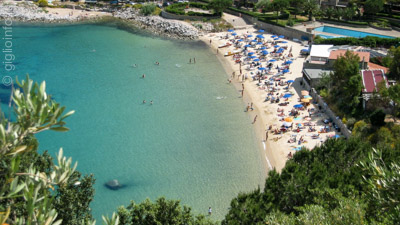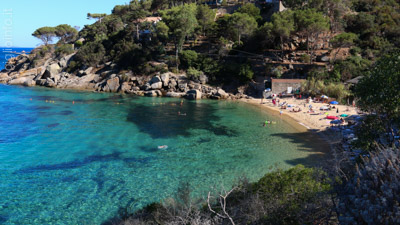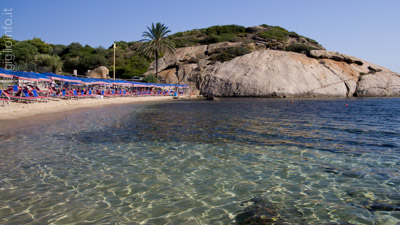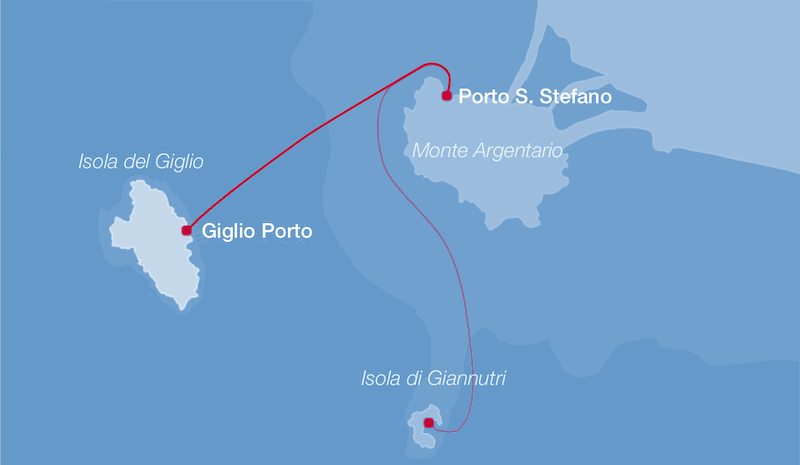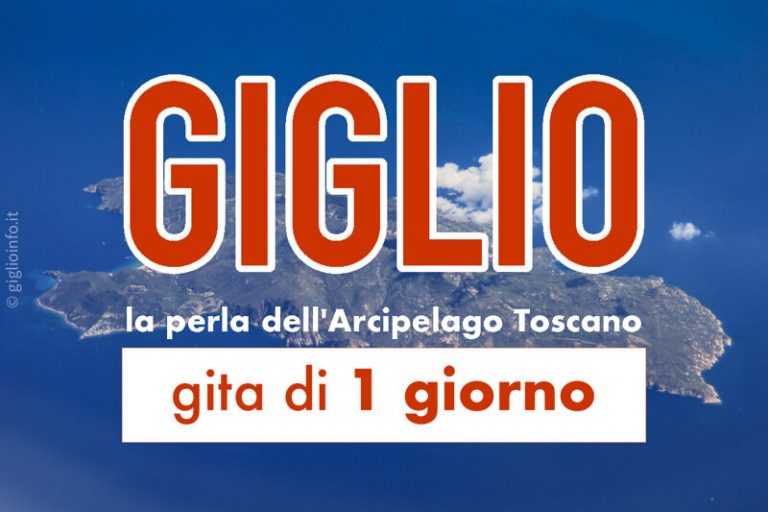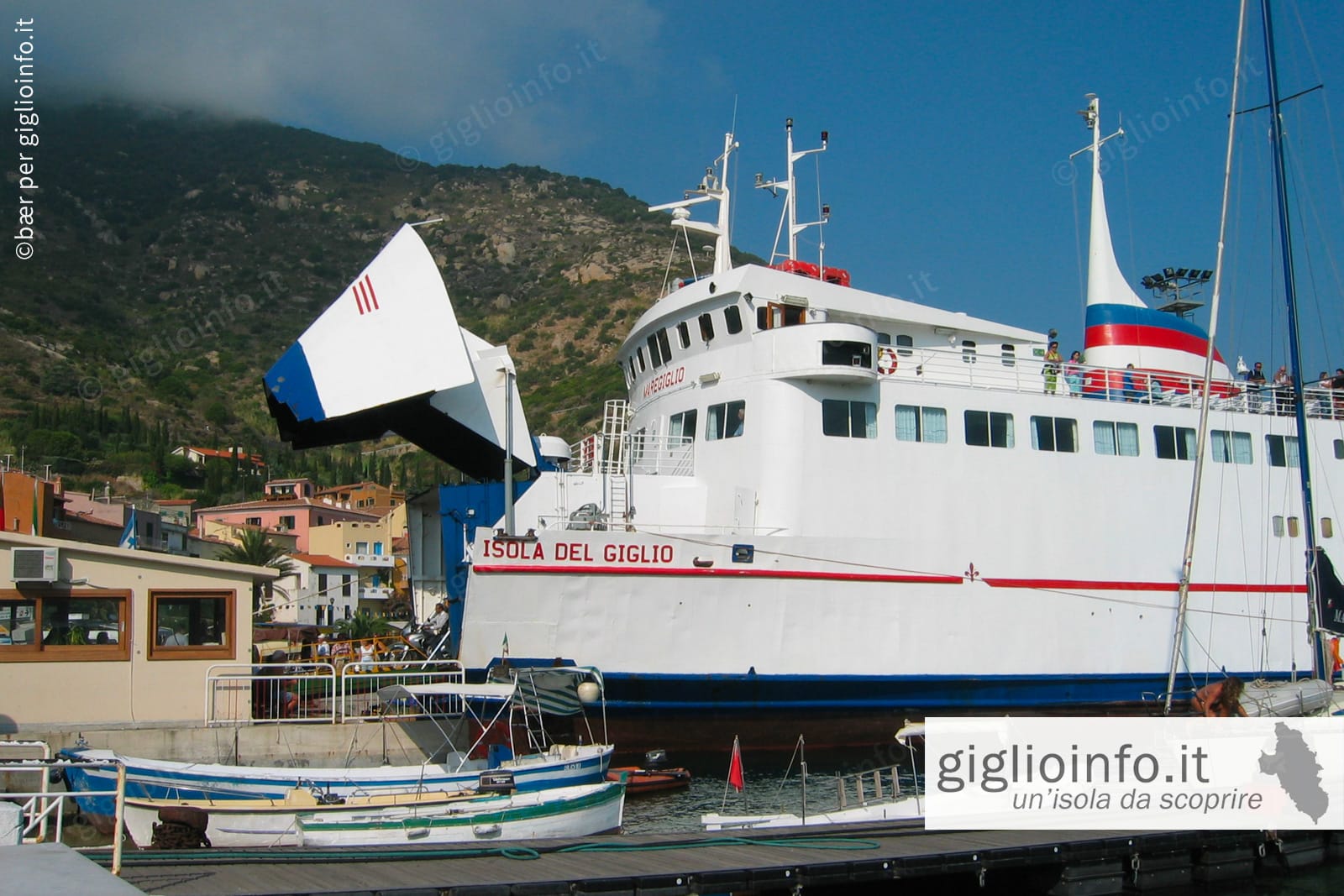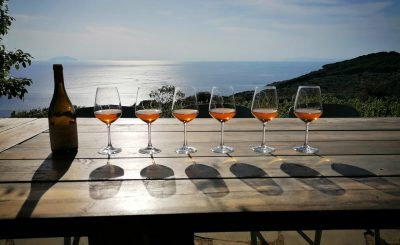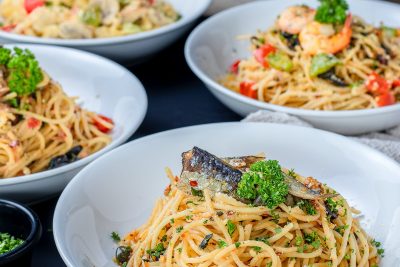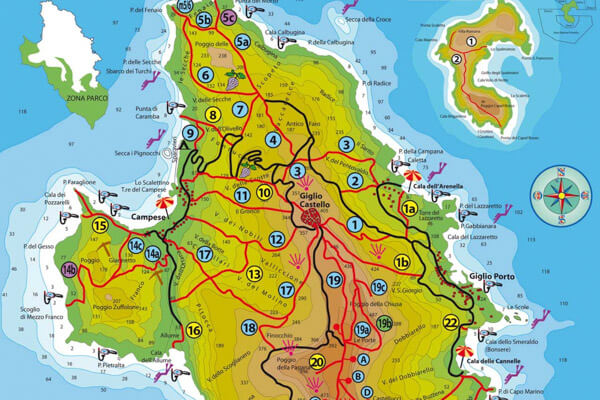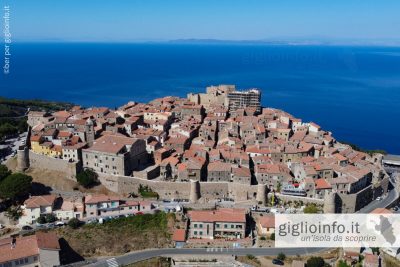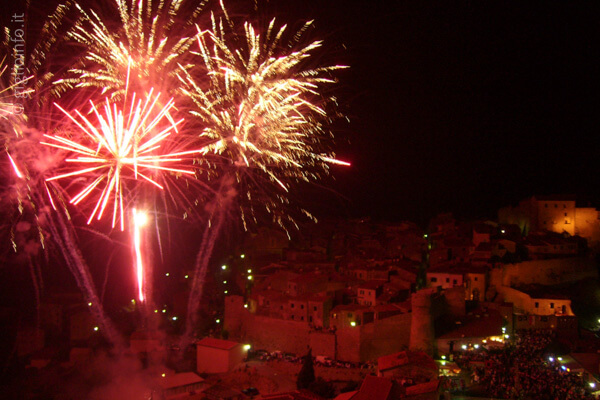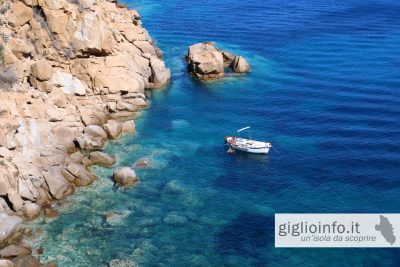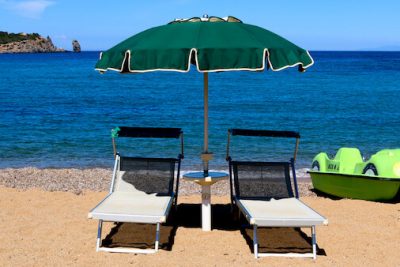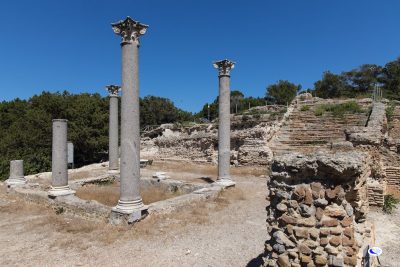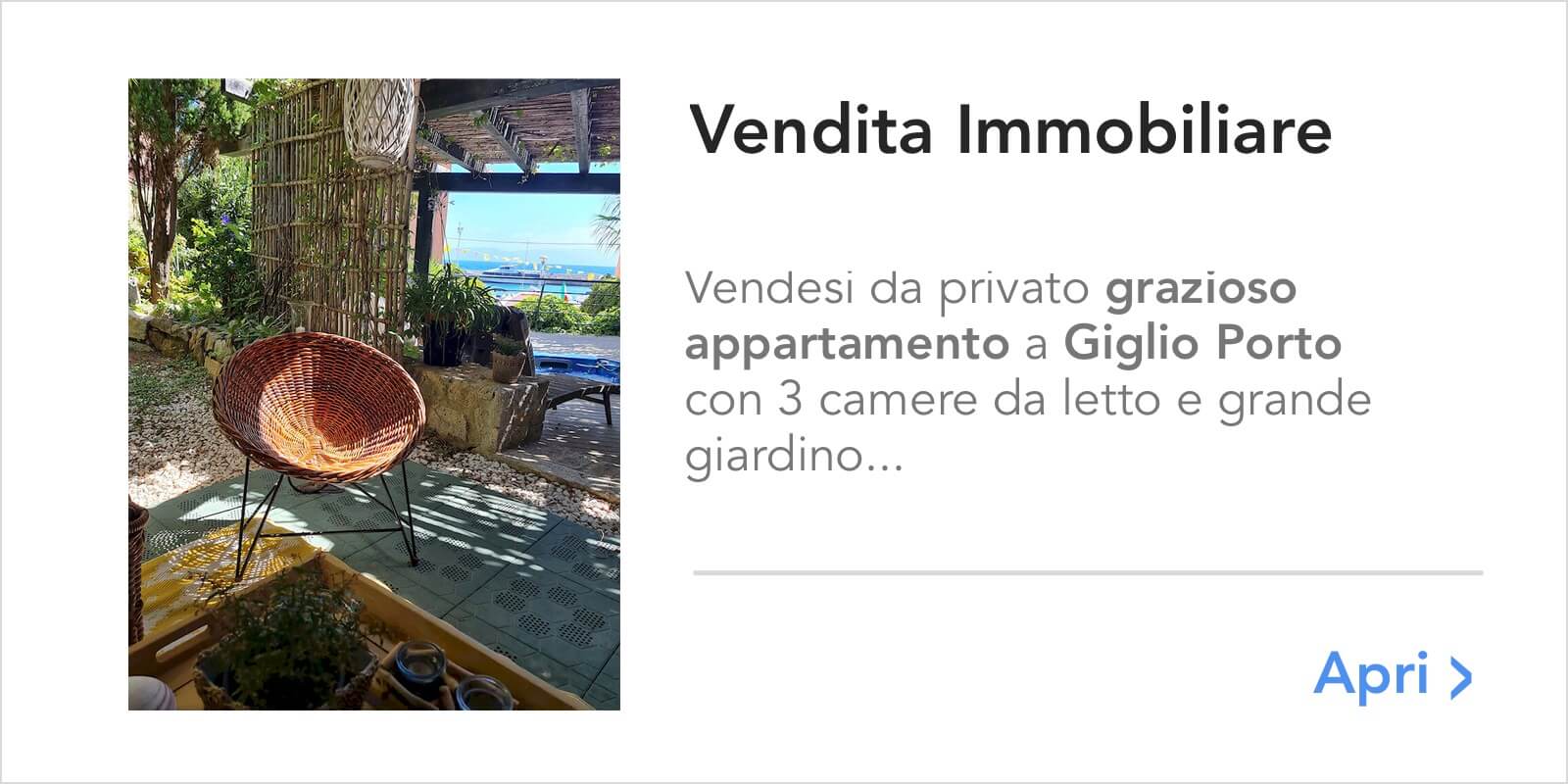Explore Giglio Island, Tuscany
The Little pearl in the tuscan archipelago
The island of Giglio is known above all for its natural beauties: the crystal clear sea, with rich and fishy seabed, are the setting for a 90% untouched nature where the low Mediterranean vegetation still reigns with its colors and perfumes.
Beautiful sandy beaches and isolated coves, ancient paths immersed in a rich nature, breathtaking views, a picturesque port and the charming medieval village of Giglio Castello make of Giglio island a treasure to be discovered.
It is the ideal destination for all those who love a genuine relationship with nature and the rustic country environment, the sea, walks, bird watching, minerals and the fascinating underwater world. The temperate climate allows the visitor to enjoy a wonderful holiday in every season.
The islands are special places, where it is easier to get caught up in the idea of being in a smaller, fascinating world full of surprises. Giglio Island is one of these special places, where even walking along a path makes you feel a different air, scented with the sea and flowers ...
Advertisement
Promotional Video “Isola del Giglio” of Roberto de Angelis for the Associazione San Rocco
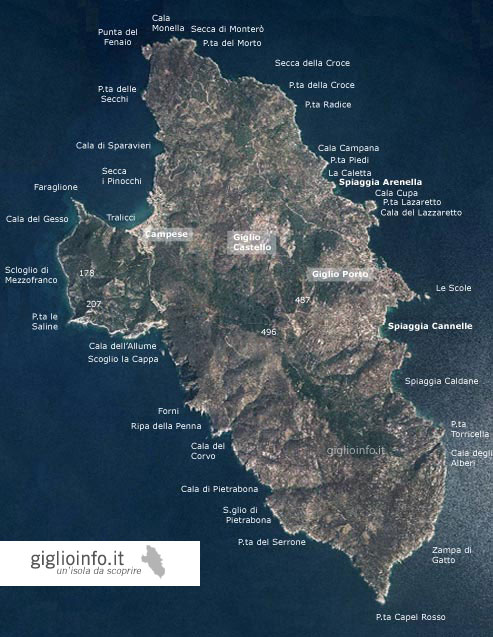
Landscape of Giglio Island

The beautiful island Isola del Giglio is located in the southern corner of the Tuscan Archipelago, a group of island that lie between Tuscany and Corsica in Tyrrhenian Sea. It’s only 11 miles away from the Argentario Promontory from where the ferries leave. With its 21 square kilometers, a length of 8.3 km and a width of 4.7 km, it is the second largest island in the archipelago after Elba and counts around 1500 inhabitants.
Almost completely mountainous, its highest point, Poggio della Pagana, reaches 496 meters a.s.l. (around 1500 feet). From the top, particularly on a clear day, one can enjoy a spectacular panorama of the coast and of the other islands of the Tuscan archipelago.
Giglio is almost totally made of granite, with the exception of the
promontory of Franco, which is characterized by limestone and Palaeozoic quartzite. At the northern point of the promontory you will find a spectacular rock, the Faraglione of Campese.
Flora and Fauna
The Isola del Giglio lies uninhabited for 90% of its territory – here flora and fauna of great beauty and interest dominate the wild nature, especially in springtime, when the island explodes in colours, becoming a picture of incredible beauty.
The mild Mediterranean climate, characterized by a high level of summer dryness accompanied by the frequent sea breeze, favours evergreen plants such as those with coriaceous leaves or thorns (like the broom). The original vegetation of elm oak woods has made place nowadays to the Mediterranean macchia.
The botanical species are rich in abundance – a researcher had registered over 700 – ranging from strawberry trees on heather to chestnut trees. In some places the island was also reforested with pines.
In addition, there are some rare animals on Giglio, such as the frog “Discoglosso sardo”, the peregrine falcon, and the royal and Corsican seagulls, whereas vipers and other venomous animals are all but missing.
Giglio's Sea and Coastline
The impressive coastline, 28 kilometres long, where cliffs of granite alternate with coves, bays and sandy beaches, is generally more gentle on the eastern coast while on the western side you find steep slopes and lofty, majestic cliffs running right down to the sea.
Most of the coast is made up of smooth granite rocks which are often comfortable to lie down, offer easy access to the sea and also allow you to dive. The north-western part instead is characterized by limestone and is more rigid, in some places the mountains just seem to fall into the sea. But it is here that there are the other small pebble stone beaches of the island, hidden beaches and inaccessible from the ground.
Beaches
There are four main beaches on the island of Giglio: Campese beach on the north-west coast, the largest on the island, and the three minor beaches on the east coast around Giglio Porto: Cannelle beach, Arenella beach and of the Caldane. Each one different from the other, they are all easily accessible except Caldane, which can only be reached by sea or on foot. All the beaches have a part of the free beach and areas served by equipped bathing establishments….find out more >>>
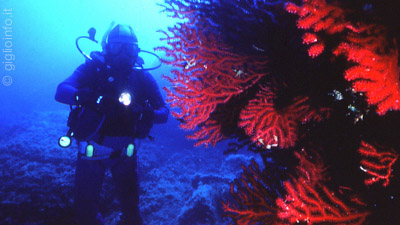
Diving Giglio Island
With its crystal clear waters, never excessively cold, and the seabed rich in walls, caves, shoals and wrecks, Giglio offer the diving enthusiasts an impressive series of diving spots. Posidonia meadows, marvelous orgones, and colorful sponges make this area a real natural heritage…find out more >>
Advertisement
The Villages
The villages on Giglio are three: Giglio Porto, the only port where you arrive with the ferries, Giglio Castello on top of a mountain with its medieval fortification, and Giglio Campese with its wide and long beach.
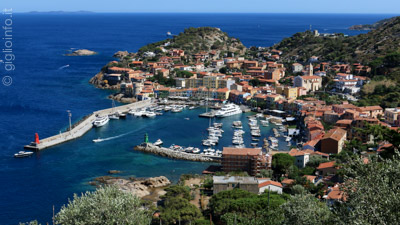
Giglio Porto
Giglio Porto is the only harbour of the island, small and picturesque, with multicolored houses and the sea of unimaginable clarity for a port. In its narrow buzzing streets there are shops of all kinds alternated with restaurants, bars and ice cream parlors. Things to see: the Torre del Saraceno and the remains of the walls of a Roman villa (now incorporated in the houses) in the same-named cove.
<
Giglio Castello
The charming village of Giglio Castello rises on the heights of the Isola del Giglio at 405 meters a.s.l. Within the medieval city walls nothing seems to have changed over the centuries: narrow lanes and alleys alternate with little squares. Things to see: the church of San Pietro Apostolo with numerous finds. From the village you can admire incredible views of the whole Tuscan Archipelago and start on one of the many hiking trails.
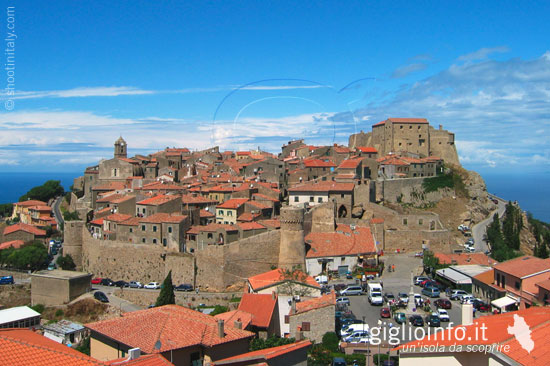
Giglio Campese
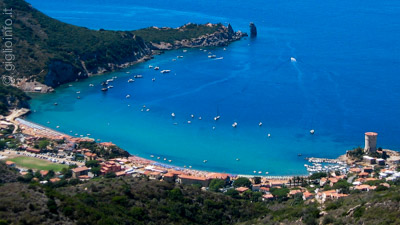
Giglio Campese is situated on the west side of the island and is more of a tourist settlement along it’s long and wide sandy beach. Symbol of the beautiful bay is a monolithic rock, the Faraglione, that emerges for 20 meters on the left end side of the bay and the medieval fortified tower Torre del Campese on the other. Thanks to the north-westward orientation you can enjoy beautiful sunsets from the beach.
History and Culture
The island of Giglio was inhabited in prehistoric times, and frequented by Etruscans and Romans: in Cala Saracena, near Giglio Porto, there are the remains of a Roman villa immersed in the water. In the Middle Ages the island was dominated by Pisa, but in the course of the 15th century it entered the Florentine orbit. However, the threat of Barbary attacks remained constant, so much so that in 1544 seven hundred inhabitants were deported as slaves. The Giglio was then repopulated by calling Sienese peasants and today boasts a respectable tourist attraction…find out more >>>
A curiosity: the name Giglio does not derive from the flower or from the Florentine domination, but derives from the Latinization of the Greek word Capra or Aegilium: Island of the Goats. In our days, however, there is no trace of goats.
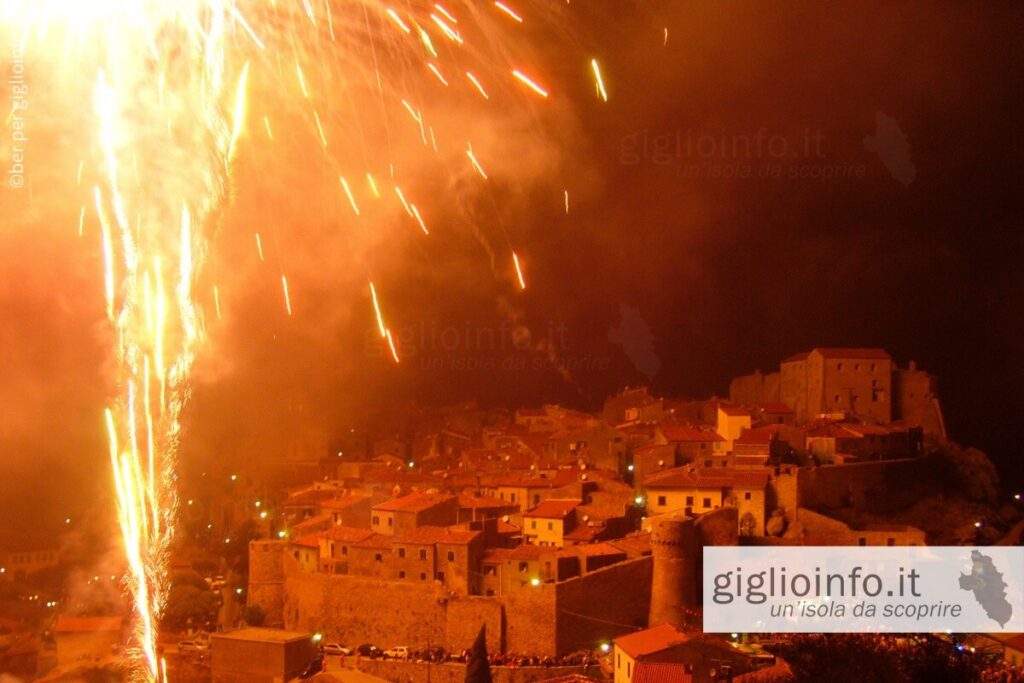
Events and Traditional Celebrations
The most important events on Giglio are the festivities of the Patron of the villages:
- August 10th, San Lorenzo, Giglio Porto
- August 16th, San Rocco, Giglio Campese
- September 15th, San Mamiliano, Giglio Castello
In addition, various other events, activities for children, festivals and concerts are organized during the summer period. Also noteworthy is the Grape Festival and Open Taverns in Giglio Castello on the last weekend of September…find out more >>>
Advertisement
Giglio island fact sheet
Fact Sheet Giglio
Name: Isola del Giglio
Region: Toscana
Province: Grosseto (GR)
Latitudine: 42° 21′ Nord
Longitudine: 10° 45′ Est
Area: 21,2 km²
Length: 8,3 km (N/O-S/E)
Width: 4,7 km
Elevation: 496 m s.l.m. Poggio della Pagana
Coast: 28 km
Popoluation: 1.399 (2013)
Density: 59 inh./km²
Phone Code: Tel. +39 0564
Suburbs and Postal Codes:
Giglio Castello, CAP 58012
Giglio Porto, CAP 58013
Giglio Campese, CAP 58012
Isola di Giannutri, CAP 58019
» Comune di Isola del Giglio
Più informzioni
» www.wikipedia.org
Distances Giglio
Giglio Porto by boat to/from –
11.6 m (21,5 km) – Porto S. Stefano
15.1 m (28 km) – Porto Ercole
As the Crow Flies
7.8 m (13.9 km) – Monte Argentario
8.5 m (15.7 km) – Isola di Giannutri
14.4 m (26.6 m) – Talamone
22.3 m (41.3 km) – Castiglione della Pescaia
27.9 m (51.7 km) – Isola d’Elba
36.3 m (67.2 km) – Isola Pianosa
23.9 m (44.3 km) – Isola di Montecristo
59.2 m (109.6 km) – Corsica
The nautical mile, also known as the international nautical mile, and often abbreviated with the abbreviations M, NMI or NM (Nautical Mile). The conversion factor is:
1 nautical mile (NMI) = 1852 meters
Italian Island
List of Italian islands sorted by sqm:
Sicily: 25.426,2 kmq
Sardinia: 23.812,6 kmq
Elba (Tuscany): 223,5
Sant’Antioco (Sardinia): 108,9 kmq
Pantelleria (Sicily): 83,0 kmq
San Pietro (Sardinia): 51,3 kmq
Asinara (Sardinia): 50,9 kmq
Ischia (Campania): 46,4 kmq
Lipari (Sicily): 37,3 kmq
Salina (Sicily): 26,1 kmq
Giglio (Tuscany): 21,2 kmq
Vulcano (Sicily): 20,9 kmq
Lampedusa (Sicily): 20,2 kmq
La Maddalena (Sardinia): 20,1 kmq
Visit Giglio Island
Getting Here
The island of Giglio can be reached throughout the year with one hour of navigation starting from Porto Santo Stefano (Monte Argentario). From here regular ferries reach Giglio Porto, the island’s only harbour. The two shipping companies Toremar and Maregiglio offer up to 12 trips a day during the summer, while in winter the daily departures are reduced to 4.
Alternatively you can visit Giglio with a mini-cruise: from the end of June to the middle of September, day trips are offered by cruise ships from Porto Santo Stefano and Castiglione delle Pescaia. The mini-cruises with destination of the island Giglio and Giannutri include stops of about 2-3 hours for a visit of the island or for a swim in the sea.
A daytrip to Giglio - Things to See & Do
Once you arrive with the ferry in Giglio Porto you can either opt to rent a boat or leave with the taxi boat service to discover the island from the sea or be taken to the nearby beaches of Cannelle or Caldane for a day of relaxation. If you want to head to the biggest beach of the island, Giglio Campese, best take the bus or taxi. In alternative you can also rent a car, scooter or e-bike to move around indipendently and explore the island and stop wherever you want.
A must see of Giglio is the medieval town of Giglio Castello on the hills. After a short break at Giglio Porto – you will have more time to visit it before leaving the island – take the bus to reach the village whose charm has remained intact over time: it’s all a climb of narrow streets along the ancient walkways that lead you to panoramic places with spectacular views on the ancient lighthouse and the whole Tuscan archipelago.
From Giglio Castello you can do a trekking tour (instead of taking the bus) back to Giglio Porto or down to Giglio Campese where you can enjoy some time by the sea: for being the largest beach on the island, the Campese bay is relatively quiet and is one of the most striking with the Medici Tower on one side and a rock, the Faraglione, on the other. Here the colors of the sea, of extraordinary clarity, contrast with the reddish sand of granite sedimentation.
Returning to Giglio Porto by bus, before leaving by ferry, a walk to the port with its colorful and picturesque houses, on the pier and a visit to the Saraceno tower and cove where you can see the remains of a Roman villa, should not be missed.
As an alternative to buses, you can also arrange with one of the taxi drivers for a taxi tour of the island. So you can also add a jump to the southern tip of Giglio, Capel Rosso, a truly magical place with the “famous” namesake lighthouse.
Please note: car and e-bike rental are available all year round, boat and scooter rentals only from May to September.

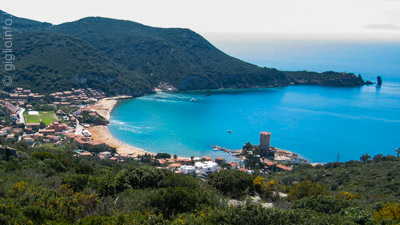 Spiaggia del Campese »
Spiaggia del Campese »